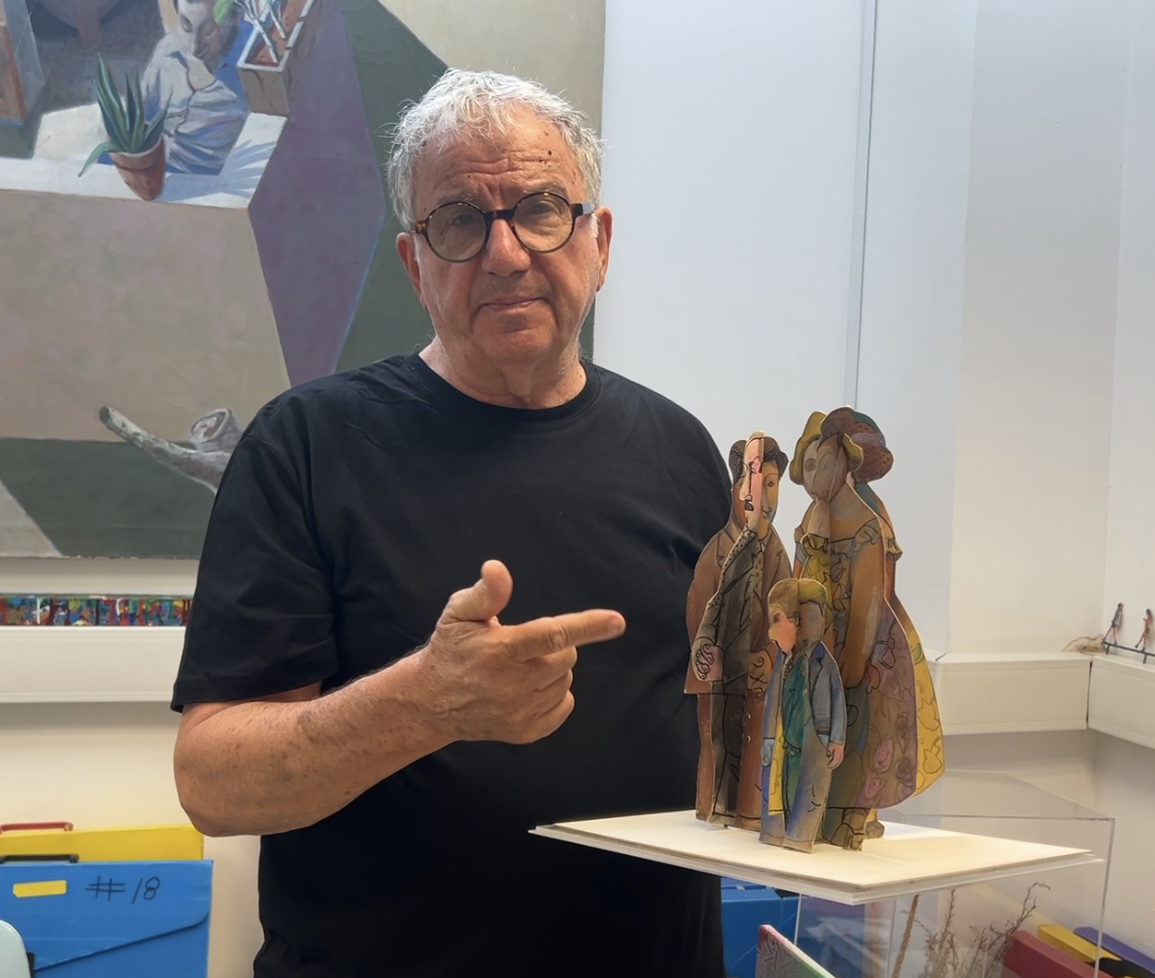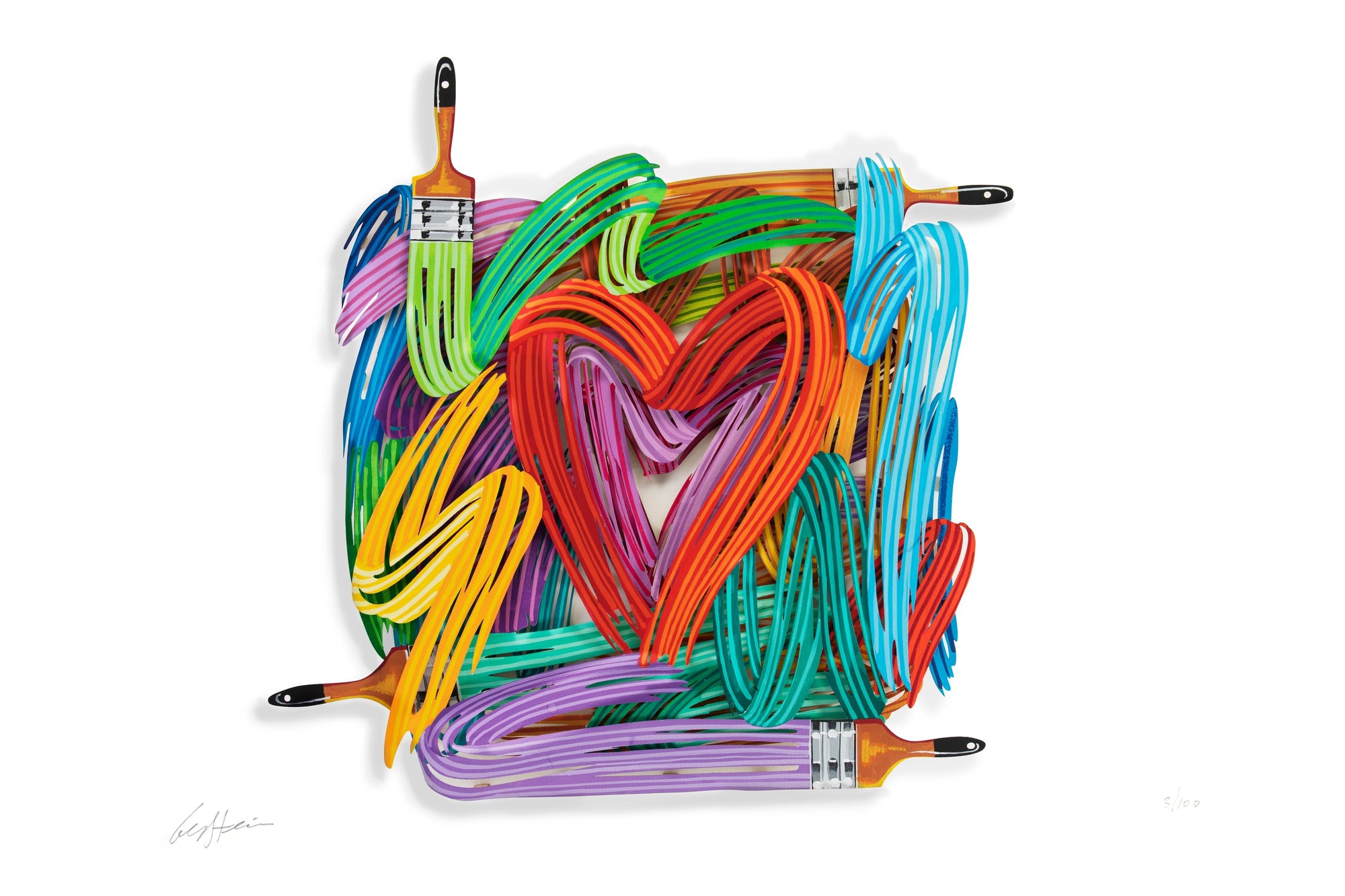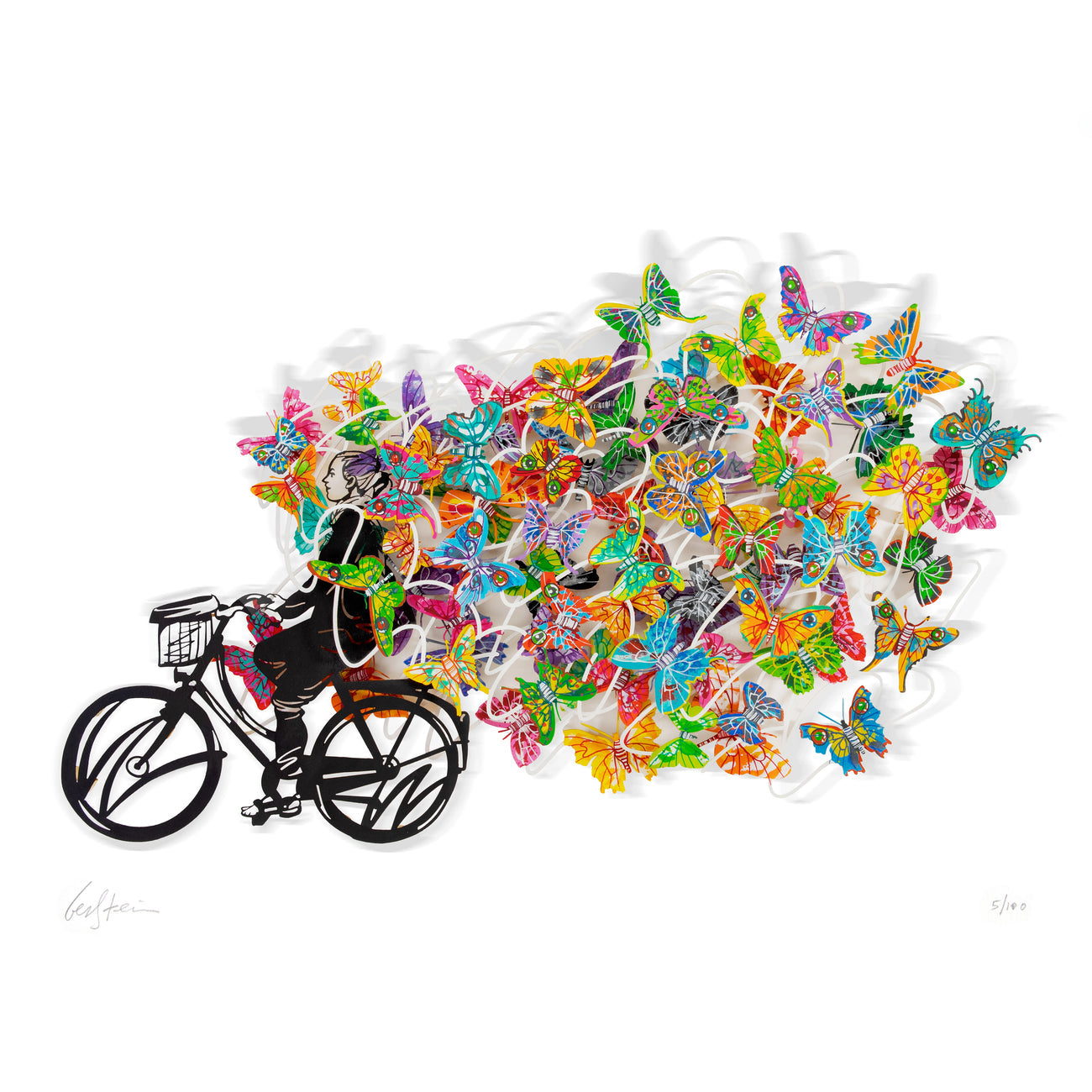David Gerstein was born in 1944 in Jerusalem, Israel. From a young age, he showed a deep interest in art, often drawing and painting with a natural curiosity for colors, shapes, and movement. Growing up in Jerusalem, he was surrounded by a rich cultural and historical landscape, which undoubtedly influenced his artistic perspective.

Early Artistic Education
Gerstein’s formal art education began at the Bezalel Academy of Arts and Design in Jerusalem. This was, and still is, one of Israel’s leading art institutions. Studying there in the 1960s, he was introduced to traditional techniques, but he also began developing his own unique artistic voice.
Seeking further artistic training, he continued his studies abroad:
-
École nationale supérieure des Beaux-Arts, Paris – Here, he was exposed to classical European painting techniques while also being influenced by the avant-garde art scene of the time.
-
St. Martin’s School of Art, London – At St. Martin’s, he gained a deeper understanding of contemporary and experimental art forms.
-
School of Visual Arts, New York – Immersed in the eclectic New York art scene, he explored pop art, abstraction, as well as new materials that would later shape his innovative approach.
David Gerstein's Early Artistic Practices
In his early years as an artist, Gerstein primarily worked as a painter. His initial works were figurative, often featuring expressive brushstrokes and bold compositions. However, he soon became interested in pushing the boundaries of traditional painting, looking for ways to break out of the two-dimensional canvas.
This led to experiments with cutout wooden and paper sculptures, which he began creating in the 1970s. These early works marked a transition from 2-dimensional painting into the three-dimensional art realm, laying the foundation for his signature style.

The Shift to Multi-Layered Metal Sculptures
In the 1980s and 90s, David Gerstein started to experiment with laser-cut metal, allowing for greater precision and durability. Lasers had been used for some time to cut metal, but never had they been used in an artistic setting in quite the way Gerstein envisioned.
He saw an opportunity to break free from the constraints of traditional sculpture, which often relied on casting, welding, or carving. By using laser technology, he could create intricate, flowing shapes with a level of detail that was impossible to achieve by hand.

Gerstein’s approach was groundbreaking. Instead of sculpting in the conventional sense, he began drawing directly onto metal, treating the surface like a canvas. The laser would then cut out his designs with remarkable accuracy, preserving every fluid stroke and curve of the artist. This technique allowed David Gerstein to introduce a new kind of artistic dynamism. In this way, his works could have the expressiveness of a painting while maintaining the sculptural presence of metal.
Moreover, the use of multi-layered compositions brings his sculptures to life. By stacking multiple layers of cut metal, each painted in vibrant colors, Gerstein created a sense of movement and depth. Butterflies seemed to flutter, cyclists raced forward, and flowers swayed as if caught in the wind. The interplay of shadow and light between the layers added to the illusion of motion, making his works feel almost animated.
This innovative approach positioned David Gerstein as a pioneer in contemporary metal art. His method challenged the boundaries between painting and sculpture, blurring the lines between two-dimensional and three-dimensional art. Today, his laser-cut metal works are recognized globally, influencing artists and expanding the possibilities of what metal sculpture can achieve.
See David Gersteins entire 3D Metall Wall Sculpture collection here!





